-
 Bitcoin
Bitcoin $96,967.1185
-0.97% -
 Ethereum
Ethereum $2,671.8672
-2.29% -
 XRP
XRP $2.5695
-4.76% -
 Tether USDt
Tether USDt $1.0002
0.01% -
 BNB
BNB $645.6047
-1.25% -
 Solana
Solana $171.2167
-1.05% -
 USDC
USDC $1.0000
0.01% -
 Dogecoin
Dogecoin $0.2462
-2.20% -
 Cardano
Cardano $0.7733
-3.19% -
 TRON
TRON $0.2391
-2.12% -
 Chainlink
Chainlink $17.7376
-2.28% -
 Sui
Sui $3.3727
-1.65% -
 Avalanche
Avalanche $24.6569
-0.32% -
 Stellar
Stellar $0.3296
-5.06% -
 Litecoin
Litecoin $130.0046
2.52% -
 Toncoin
Toncoin $3.6504
1.46% -
 Shiba Inu
Shiba Inu $0.0...01532
-0.97% -
 UNUS SED LEO
UNUS SED LEO $9.6755
-0.52% -
 Hedera
Hedera $0.2125
-2.94% -
 Hyperliquid
Hyperliquid $24.8232
0.91% -
 Polkadot
Polkadot $5.1674
3.43% -
 MANTRA
MANTRA $7.5034
-0.01% -
 Bitcoin Cash
Bitcoin Cash $320.8281
-0.64% -
 Ethena USDe
Ethena USDe $0.9978
-0.18% -
 Bitget Token
Bitget Token $4.7462
4.95% -
 Uniswap
Uniswap $8.9431
-4.59% -
 Dai
Dai $0.9997
-0.07% -
 Monero
Monero $228.7110
-0.47% -
 NEAR Protocol
NEAR Protocol $3.3985
0.84% -
 Pepe
Pepe $0.0...09371
-0.86%
What is a Schnorr signature?
Schnorr signatures, featuring enhanced security, efficiency, and linear signature aggregation, are revolutionizing digital asset transactions in cryptocurrencies like Bitcoin and Ethereum.
Feb 20, 2025 at 10:30 pm

Key Points:
- Explanation of Schnorr signatures, their mathematical foundation, and advantages over existing schemes.
- Detailed guide on generating and verifying Schnorr signatures using both manual and programmatic methods.
- Examination of the integration of Schnorr signatures into various cryptocurrency protocols and their potential impact.
- Analysis of the benefits and limitations of Schnorr signatures in the context of cryptocurrency transactions.
- Comprehensive comparison of Schnorr signatures with other popular digital signature algorithms, such as ECDSA.
Article Content:
1. Understanding Schnorr Signatures
Schnorr signatures, introduced by Claus-Peter Schnorr in 1991, represent a type of digital signature algorithm that offers enhanced security and efficiency compared to traditional schemes. Unlike the widely used ECDSA (Elliptic Curve Digital Signature Algorithm), Schnorr signatures utilize elliptic curve cryptography but adhere to a different mathematical foundation. This foundation involves the use of cyclic groups, where the product of two group elements (known as a point multiplication) plays a crucial role in the signature generation process.
2. Mathematical Foundation of Schnorr Signatures
Mathematically, Schnorr signatures rely on the Diffie-Hellman key exchange protocol and the discrete logarithm problem. Given a cyclic group G and a generator point P, Schnorr signatures involve the following steps:
- Select a random integer k.
- Compute R = kP.
- Compute the message hash H(m).
- Compute s = k + H(m)c.
- Output the signature (R, s).
Verifying a Schnorr signature involves checking whether the equation R = sP - H(m)c holds.
3. Benefits of Schnorr Signatures
Schnorr signatures provide several advantages over existing signature algorithms:
- Smaller Signature Size: Schnorr signatures are approximately half the size of ECDSA signatures, reducing storage and transmission costs.
- Linear Signature Aggregation: Schnorr signatures can be linearly aggregated, allowing multiple signatures to be combined into a single, compact signature. This property simplifies multi-party transactions.
- Non-Malleability: Schnorr signatures are non-malleable, meaning that modifying a valid signature will result in an invalid signature. This enhances security against certain types of cryptographic attacks.
4. Integrating Schnorr Signatures into Cryptocurrencies
Several cryptocurrency platforms have implemented or are planning to integrate Schnorr signatures:
- Bitcoin: Schnorr signatures are expected to be added to Bitcoin in the upcoming Taproot soft fork upgrade, bringing improved privacy and scalability.
- Ethereum: Schnorr signatures are under consideration for inclusion in Ethereum's consensus layer update, Ethereum 2.0.
- Tezos: Tezos has already implemented Schnorr signatures, offering streamlined multi-signature transactions and enhanced security.
5. Benefits for Cryptocurrency Transactions
In the context of cryptocurrency transactions, Schnorr signatures offer the following benefits:
- Reduced Transaction Fees: Smaller signature sizes result in lower transaction fees for both sending and receiving parties.
- Improved Privacy: Linear signature aggregation enables the consolidation of multiple signatures, making it harder to track individual transactions.
- Increased Scalability: Faster signature verification and aggregation improve overall blockchain performance and support higher transaction volumes.
6. Limitations of Schnorr Signatures
Despite their advantages, Schnorr signatures have certain limitations:
- Potential for Signature Forgery: If the private key is leaked, it is possible for an attacker to forge Schnorr signatures.
- Implementation Complexity: Implementing Schnorr signatures in legacy systems can be challenging due to their different mathematical foundation compared to ECDSA.
7. Comparison with Other Signature Algorithms
Here is a comparison of Schnorr signatures with other popular digital signature algorithms:
- ECDSA: Schnorr signatures offer smaller signature sizes, faster verification, and linear signature aggregation compared to ECDSA.
- RSA: Schnorr signatures have a more secure mathematical foundation than RSA and produce smaller signatures.
- EdDSA: Schnorr signatures have similar efficiency to EdDSA, but they offer non-malleability and the ability to generate aggregated signatures.
FAQs:
- What is the difference between Schnorr signatures and ECDSA signatures?
Schnorr signatures differ from ECDSA signatures in their mathematical foundation and properties. Schnorr signatures rely on cyclic groups and offer linear signature aggregation, while ECDSA utilizes elliptic curves and does not support signature aggregation.
- Why are Schnorr signatures important in cryptocurrency?
Schnorr signatures offer significant benefits for cryptocurrency transactions, including reduced signature sizes, improved privacy, and increased scalability. Their implementation in leading platforms like Bitcoin and Ethereum enhance security and efficiency.
- Is Schnorr signing the same as Schnorr signature?
Schnorr signing refers to the process of generating a Schnorr signature, which involves computing the signature values R and s. Schnorr signatures, on the other hand, represent the output of the signing process.
- Is Schnorr signature scheme better than RSA?
Schnorr signatures offer certain advantages over RSA, including a more secure mathematical foundation, smaller signature sizes, and the ability to linearly aggregate signatures. RSA remains widely used, but Schnorr signatures are gaining popularity for specific applications.
- How do I implement Schnorr signatures in my code?
Implementing Schnorr signatures involves selecting a secure random generator, performing point multiplication over a specified cyclic group, and computing the signature components. Various cryptographic libraries provide functions and classes to simplify Schnorr signature implementation.
Disclaimer:info@kdj.com
The information provided is not trading advice. kdj.com does not assume any responsibility for any investments made based on the information provided in this article. Cryptocurrencies are highly volatile and it is highly recommended that you invest with caution after thorough research!
If you believe that the content used on this website infringes your copyright, please contact us immediately (info@kdj.com) and we will delete it promptly.
- Ethereum (ETH) vs. IntelMarkets (INTL): Can This New AI-Based Crypto Disrupt the ETH Price in Q2 2025?
- 2025-02-22 01:35:24
- Kanye West's YZY Token May Be Coming This Month, Polymarket Bettors Wager $11M
- 2025-02-22 01:35:24
- Ethereum (ETH) Price Shows Stronger Momentum Than Bitcoin (BTC)
- 2025-02-22 01:35:24
- Pi Network Crashes 50% After Mainnet Launch, Top Rivals to Consider
- 2025-02-22 01:35:24
- Bitcoin Pepe: The 'ETH Killer' Nobody Saw Coming
- 2025-02-22 01:35:24
- XRP May Have a New Catalyst That Could Push Its Price Higher Following the Ongoing Consolidation Phase
- 2025-02-22 01:35:24
Related knowledge
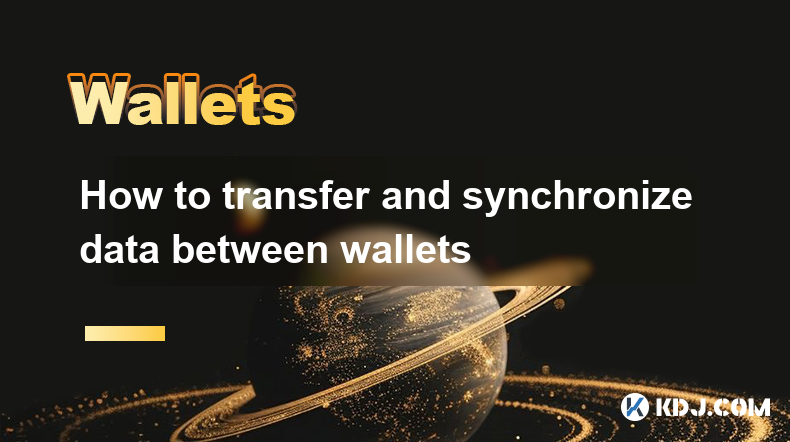
How to transfer and synchronize data between wallets
Feb 21,2025 at 12:25pm
Key Points:Understanding different wallet types and their capabilitiesIdentifying similarities and differences between walletsExploring options for transferring and synchronizing dataEnsuring data security and integrity during transferAddressing common challenges and troubleshooting tipsHow to Transfer and Synchronize Data Between Cryptocurrency Wallets...
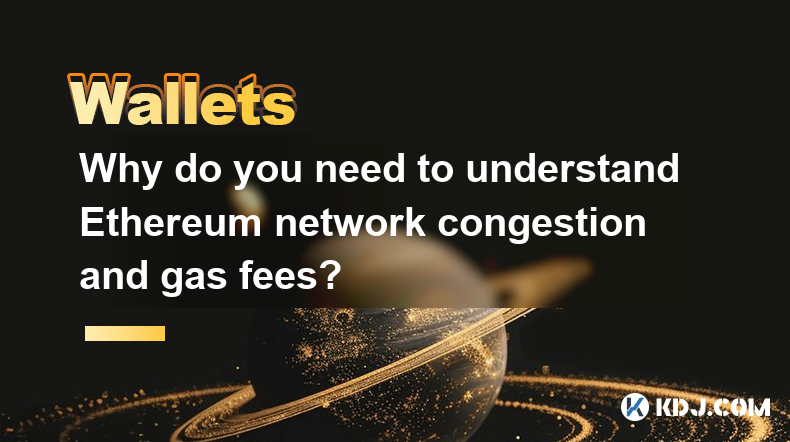
Why do you need to understand Ethereum network congestion and gas fees?
Feb 21,2025 at 04:48am
Key PointsUnderstanding Ethereum Network Congestion and Gas FeesGas Fees ExplainedFactors Affecting Network CongestionStrategies for Minimizing Gas FeesImpact of Ethereum UpgradesUnderstanding Ethereum Network Congestion and Gas FeesThe Ethereum network is a decentralized platform that hosts a vast ecosystem of decentralized applications (dApps), non-fu...
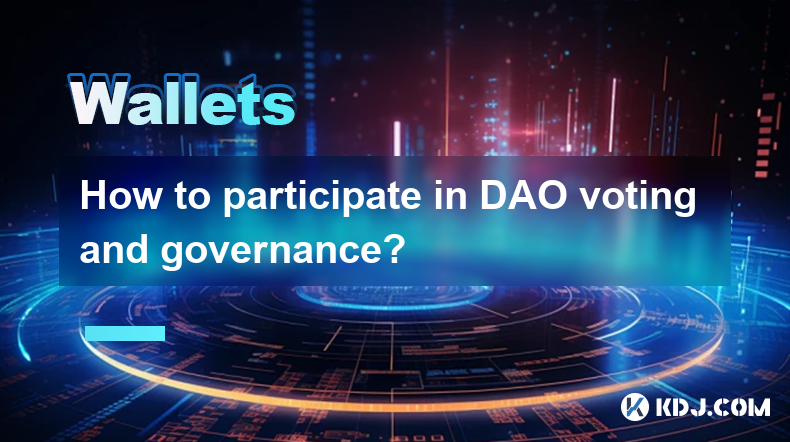
How to participate in DAO voting and governance?
Feb 21,2025 at 03:42pm
Key Points:Overview of DAO Voting and GovernanceUnderstanding DAO Structures and MembershipRole of DAO Tokens and Voting RightsParticipating in Voting and Proposal SubmissionLeveraging Governance Tools and PlatformsImpact of Voting Participation on DAO OutcomesBest Practices for Effective DAO GovernanceHow to Participate in DAO Voting and Governance1. U...
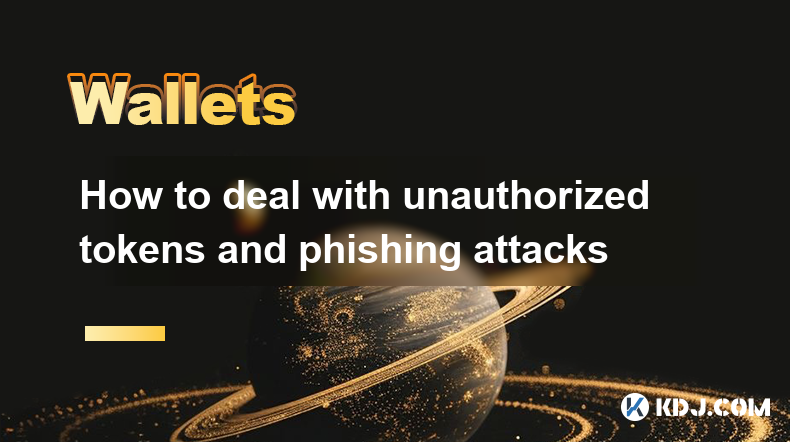
How to deal with unauthorized tokens and phishing attacks
Feb 21,2025 at 05:25am
Dealing with Unauthorized Tokens and Phishing Attacks in the Cryptocurrency CircleThe cryptocurrency market is rife with potential dangers, including unauthorized tokens and phishing attacks. To protect yourself from these threats, it's crucial to take proactive measures and be vigilant in your online activities.Key Points:Unauthorized Tokens: Tokens cr...
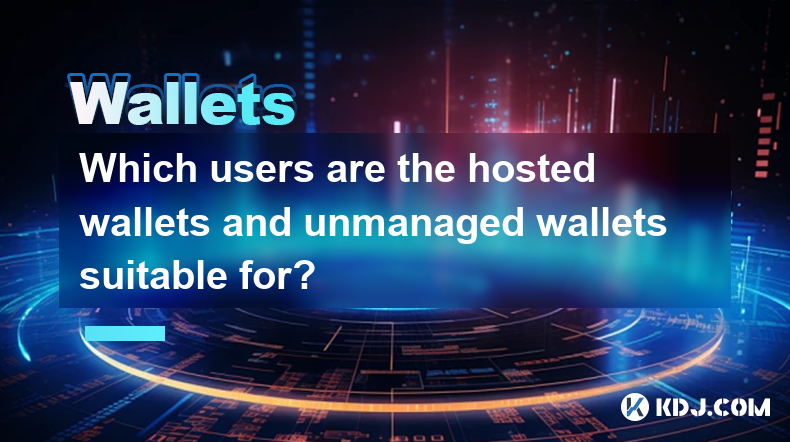
Which users are the hosted wallets and unmanaged wallets suitable for?
Feb 21,2025 at 12:00am
Key PointsDefinition and Characteristics of Hosted Wallets and Unmanaged WalletsAdvantages and Disadvantages of Hosted Wallets and Unmanaged WalletsDetermining Suitability for Hosted Wallets and Unmanaged WalletsExamples of Hosted Wallets and Unmanaged WalletsFrequently Asked Questions and AnswersHosted WalletsDefinition: A hosted wallet is a cryptocurr...
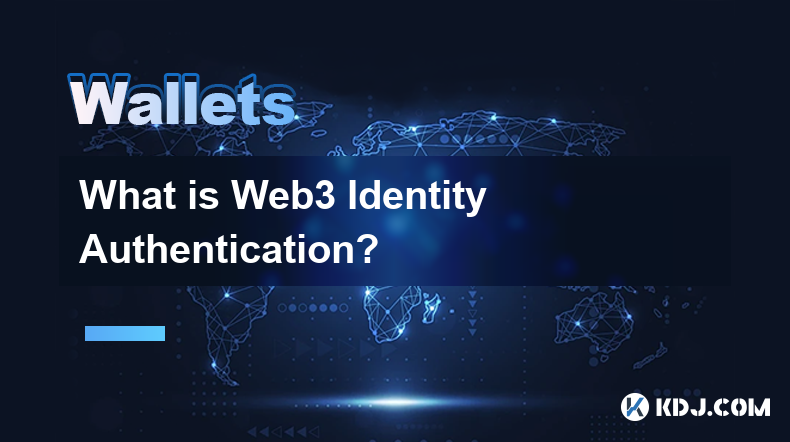
What is Web3 Identity Authentication?
Feb 21,2025 at 06:12am
Key Points:Web3 identity authentication revolutionizes online identity management.Decentralized Identifiers (DIDs) and Verifiable Credentials (VCs) provide secure and privacy-enhancing alternatives to traditional methods.Self-sovereign identity enables individuals to fully own and control their digital identities.Blockchain technology underpins Web3 ide...

How to transfer and synchronize data between wallets
Feb 21,2025 at 12:25pm
Key Points:Understanding different wallet types and their capabilitiesIdentifying similarities and differences between walletsExploring options for transferring and synchronizing dataEnsuring data security and integrity during transferAddressing common challenges and troubleshooting tipsHow to Transfer and Synchronize Data Between Cryptocurrency Wallets...

Why do you need to understand Ethereum network congestion and gas fees?
Feb 21,2025 at 04:48am
Key PointsUnderstanding Ethereum Network Congestion and Gas FeesGas Fees ExplainedFactors Affecting Network CongestionStrategies for Minimizing Gas FeesImpact of Ethereum UpgradesUnderstanding Ethereum Network Congestion and Gas FeesThe Ethereum network is a decentralized platform that hosts a vast ecosystem of decentralized applications (dApps), non-fu...

How to participate in DAO voting and governance?
Feb 21,2025 at 03:42pm
Key Points:Overview of DAO Voting and GovernanceUnderstanding DAO Structures and MembershipRole of DAO Tokens and Voting RightsParticipating in Voting and Proposal SubmissionLeveraging Governance Tools and PlatformsImpact of Voting Participation on DAO OutcomesBest Practices for Effective DAO GovernanceHow to Participate in DAO Voting and Governance1. U...

How to deal with unauthorized tokens and phishing attacks
Feb 21,2025 at 05:25am
Dealing with Unauthorized Tokens and Phishing Attacks in the Cryptocurrency CircleThe cryptocurrency market is rife with potential dangers, including unauthorized tokens and phishing attacks. To protect yourself from these threats, it's crucial to take proactive measures and be vigilant in your online activities.Key Points:Unauthorized Tokens: Tokens cr...

Which users are the hosted wallets and unmanaged wallets suitable for?
Feb 21,2025 at 12:00am
Key PointsDefinition and Characteristics of Hosted Wallets and Unmanaged WalletsAdvantages and Disadvantages of Hosted Wallets and Unmanaged WalletsDetermining Suitability for Hosted Wallets and Unmanaged WalletsExamples of Hosted Wallets and Unmanaged WalletsFrequently Asked Questions and AnswersHosted WalletsDefinition: A hosted wallet is a cryptocurr...

What is Web3 Identity Authentication?
Feb 21,2025 at 06:12am
Key Points:Web3 identity authentication revolutionizes online identity management.Decentralized Identifiers (DIDs) and Verifiable Credentials (VCs) provide secure and privacy-enhancing alternatives to traditional methods.Self-sovereign identity enables individuals to fully own and control their digital identities.Blockchain technology underpins Web3 ide...
See all articles





















































































